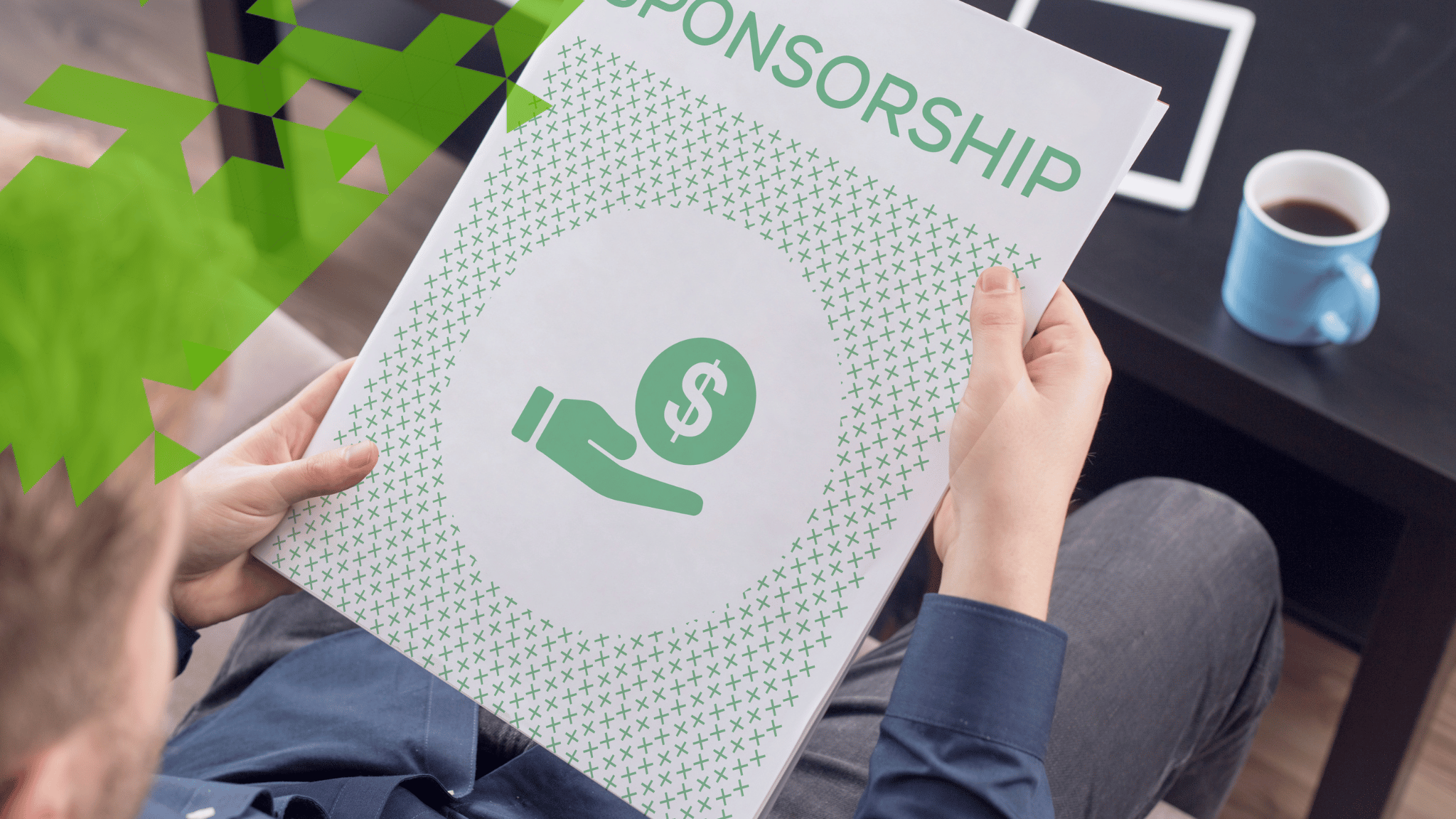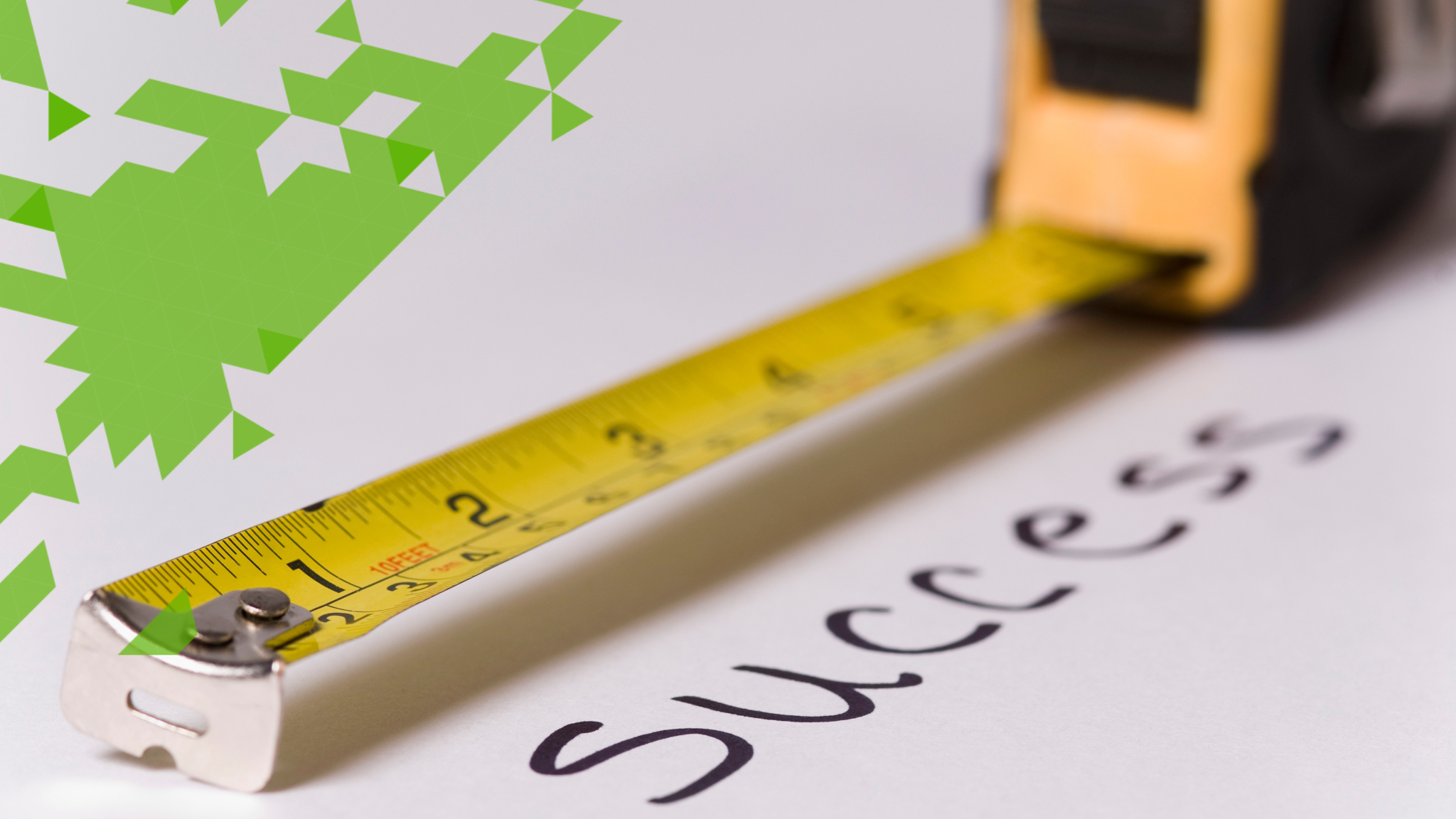
What You Need To Know Before You Can Get Sponsored
If you are looking to secure sponsors for your event or organization, there are three key things to keep in mind to increase your chances of success:
1) Who Is Going to Sell Sponsorships for You?
You can’t get sponsored if you don’t ask for sponsorship. It seems simple, but someone has to ask. Who is going to be doing the “asking?”
2) When Are You Ready to Ask for Sponsorships?
While you can seek sponsorships at any stage, you should not solicit sponsors until you are fully prepared to offer value in return. In other words, perhaps the term “shouldn’t” is more appropriate than “can’t” when discussing readiness to sell sponsorships. We call this being “sponsorship ready.”
It’s important to understand that anyone can request sponsorship, but success is far more likely with adequate preparation. In both life and the world of sponsorships, failing to plan essentially amounts to planning to fail. Being well-prepared significantly enhances your chances of securing a successful sponsorship.
3) What Is the Sponsorship Sales Process?
Securing sponsorship follows a structured process, which is not as complex as rocket science. The sponsorship sales process consists of sequential stages, ranging from understanding your brand and target audience to researching suitable sponsors. It includes crafting a compelling sponsorship deck for initial outreach and culminates in obtaining a favorable response, followed by next steps.
Another important note – if you are specifically looking for how to get sponsors for an event, there is a good chance you are on a tight timeframe. If you have used sponsorship levels in the past but haven’t locked them in yet for your upcoming events, we have some strong feelings and specific recommendations for building custom sponsorship packages.
Having outlined the essential elements, let’s delve into each segment so you can apply these best practices to how you sell sponsorship.
1) Who Is Going to Sell Sponsorships for You?
Many individuals tend to have an immediate negative reaction towards the idea of sales and may feel like they lack the ability to sell. If you are considering hiring someone to sell sponsorship on your behalf, it might be worthwhile to take a moment to read this article or watch this video before deciding.
Should you hire someone to sell sponsorships for you?
If you hire a sponsorships salesperson, you will likely need to pay a monthly fee. The fee can range from $5,000 to $15,000. Often, brokers ask for one-year minimum commitments and sales commissions ranging from 10% to 25% in addition to their retainers.
Few, if any, serious brokers will sell for you for “commission only.” Why? Because it is just as hard to sell a $10,000 sponsorship as it is for a $1 million sponsorship. If you’re not a top brand paying high fees, you’ll unlikely find a good broker who works like this.
Generally, we don’t recommend commission-only brokers, even if you find a willing partner. Such arrangements create no skin in the game for you or the broker. Since you’re not paying them, you can’t dictate how fast they work or whether they work at all. How hard would you work if you were not getting paid? Six months or more will go by, and you’ll be frustrated with a lack of success.
Who is the best person to sell sponsorships for you?
These are the most important characteristics for someone to sell sponsorships:
- Passion for your brand
- Knowledge of your brand
- Motivation for your brand to succeed
In our experience, YOU are the best person to sell sponsorships for you. We’ve seen it countless times before. People think they need to hire someone to sell sponsorships for them, then they learn they can’t afford to hire someone.
Perhaps you’ve heard this saying before, but these ten two-letter words are just as true in sponsorship as in life. “If it is to be, it is up to me.” You can be your best sponsorship seller.
Confidence in the sponsorship process and knowledge of how sponsorship works is the only thing that holds people back in these circumstances. If you’re already reading here, then you’re on the right track.
For nonprofit events and organizations, limited resources, staffing, and volunteers can make this challenging. In this case, YOU are even more important. If YOU can learn to sell sponsorships, you can greatly impact your organization and lead by example. In addition, one of the most common paths to leadership is driving revenue.
2) When Are You Ready to Ask For Sponsorships?
A company called Paul Masson Wines advertised its wine with a memorable television commercial. The company pledged to “sell no wine before its time.” In other words, the winemaker promised consumers a high-quality wine by not rushing its product to market.
Prospective sponsorship sellers also should take Paul Masson’s pledge. If a seller isn’t “sponsorship ready”, the sales process may be frustrating and fruitless.
Successful sellers are ready when they can do three things well:
They know their audience and how it matches with the sponsor’s customers.
These sellers can describe the demographics and psychographics of their audience and how their audience can benefit the sponsor. Sponsors see their existing and prospective customers among the seller’s audience. This clarity about the target audience creates confidence that the sponsorship will produce a return on investment for the sponsor.
They have great marketing.
They know how to speak to their audience through social media, video, digital, public relations, or email. These sellers can quickly demonstrate how the sponsor’s message will reach the seller’s audience. What would happen if a sponsor checked your social media, website or got on your email list? Would they be able to imagine you promoting their brand to your audience in an impactful way?
They solve sponsor challenges.
Sponsors come to the sponsorship relationship with a business challenge. Usually, they want to enhance their brand or sell more products/services. Successful sellers understand precisely how their assets and opportunities work to help the sponsor. These sellers easily communicate to buyers that a sponsorship relationship will yield success.
How Do You Know When Are Ready to Sell Sponsorships?
As a sponsorship agency, CHARGE has built a team of industry experts and experience working with both sponsors and those seeking sponsorship. We know what “ready” looks like.
For those seeking sponsorships, we created a tool called the Sponsorship Readiness Quiz. You can use our tool for free. To know if you’re ready to sell sponsorships, you can quickly assess your readiness in just a few minutes.
As you complete the survey, you will better understand how you compare to other sellers. Additionally, you will learn how buyers perceive you and identify areas where you may need to improve. When answering today’s questions, keep this in mind. Even if you aren’t ready yet, you can start developing a plan and taking action.
How Can You Get Ready To Sell Sponsorships?
Can you learn how to get sponsored purely through self-research on Google and YouTube? Absolutely. We also know that even the greatest athletes need coaching and practice. Like other business skills, great sponsorships happen the same way.
That’s why CHARGE coaches properties as they prepare to hit the sponsorship market. We created its Sponsorship Success Method to transform your sponsorship program from struggling to selling.
If you aren’t ready to sell, you can start getting ready. You should continue reading ahead to understand the sponsorship sales process. One tip – if you have not completed the short Sponsorship Readiness Quiz yet, we highly recommend you do so now.
You will see that the Sponsorship Readiness Quiz gives you an idea of what a successful Sponsorship Sales Process looks like.
3) What Is the Sponsorship Sales Process?
The objective of the sponsorship sales process is to identify and secure sponsors. There are several components to consider and prepare for. Some steps can be executed simultaneously, while others depend on completing the preceding steps. First, we will outline all the steps involved and then provide a detailed breakdown of each.
- Define and position your brand.
- Understand your audience.
- Research potential sponsors.
- Create a list of potential sponsors where there is a fit with your audience.
- Identify key decision-makers at those potential sponsors.
- Build your sponsorship deck.
- Make your first outreach.
- Follow up to get a response.
- Meet with potential sponsors.
- Follow up with a sponsorship proposal.
Let’s dive deeper into each step, remembering that starting strong and avoiding mistakes are crucial.
Define and position your brand.
What is the most common mistake in sponsorship sales? Over 60% of sponsorship seekers that reach out to CHARGE have not defined and positioned their brand. We advise clients “first you brand, then you position, then you sell.” Sales is the third step in this process and you can’t skip ahead.
First, you define a brand message. Who are you and what do you stand for? What makes you unique? What value do you offer consumers?
Second, you position your brand. You activate a comprehensive plan involving tactics like digital (social media, web, etc.), media relations, and event marketing. This is a process of finding unique ways to connect with fans. It should be creative and measurable.
Understand your audience.
Whether it’s demographics (like age and gender), psychographics (like lifestyles, interests, or values) or buying preferences (like the probability of buying certain products in an upcoming timeframe), sponsors need to understand a property’s audience to determine a match.
The best way to obtain audience data is usually from the source. For example, on-site event surveys, email surveys to a ticket buyer list, or professional market research surveys offer proven ways to define an audience. However, sometimes properties may be constrained by budget to obtain audience data from paid sources. There’s good news, though. We’ve found a few free resources to supplement your current audience data.
From CHARGE: Four Free Sources To Help Define A Property’s Audience
Research potential sponsors.
Searching for potential, or “prospective,” sponsors is akin to embarking on a treasure hunt. The journey may be challenging, but there’s a valuable prize waiting to be discovered. Let’s delve into where you can find these hidden gems.
Potential sponsors generally fall into two categories:
- Endemic Sponsors: These are sponsors intrinsically linked to the nature of your property. For instance, if you’re organizing a pizza festival, endemic sponsors would be those involved in the pizza-making process. This could include companies that manufacture flour, tomato sauce, and cheese and supermarkets that sell these ingredients. Businesses that produce pizza ovens, peels, cutters, and other baking supplies could be potential sponsors.
- Non-Endemic Sponsors: These sponsors may not be directly related to your property but are interested in your audience. For example, if the primary demographic for your pizza festival is young males aged 18-24, then your potential non-endemic sponsors could be companies that target this age group. These sponsors might offer products like energy drinks, salty snacks, or tech gadgets such as digital watches.
By understanding these two types of sponsors, you can more effectively identify and approach businesses likely to be interested in partnering with your property.
Create a list of potential sponsors where there is a fit with your audience.
Sponsorship fit refers to the alignment between the sponsor’s values, goals, target audience, and the sponsored entity. In other words, it’s about finding a partnership that makes sense regarding shared values and objectives. When a strong sponsorship fit exists, both parties can leverage each other’s strengths to create a mutually beneficial relationship.
The value of sponsorship fit cannot be overstated. A partnership that needs alignment can be inauthentic or forced, causing consumer confusion and damaging both entities’ reputations. On the other hand, a well-fitted partnership can amplify brand messaging, enhance consumer trust, and even increase sales and brand loyalty.
Identify key decision-makers.
This is as simple as putting in your due diligence to read about who they are and what they do. Some companies make it easy to find contact information. For other companies, you’ll have to dig. Look them up on LinkedIn, research company news, dig into social media accounts and investors. Don’t stop there.
While you are doing your research, also make sure you know what their competitors are doing within your company’s landscape as well.
Build your sponsorship deck.
You’ll need a great sponsorship pitch deck to capture the attention of a prospective sponsor.
You’ll include your sponsorship deck when you reach out to a prospective sponsor for the first time. The information in your deck sets the stage for the sponsor’s decision to invest in a relationship with you so you’ll want to make sure your sponsorship opportunities are clear. You may receive a call-back if you make a convincing case. If not, your inbox will be empty and calls unanswered.
You don’t have to start from scratch – Thousands of people have downloaded our Sponsorship Deck Template. Use our template to start putting your story together so you can get in front of sponsors quicker.
Make Your Initial Outreach – Contact Potential Sponsors.
Start with your message first. The messaging that you develop should be customizable for different potential sponsors, so you don’t have to start from scratch every time. Also, you can use the personalized messaging you develop in several of the following paths to make initial contact, such as what you submit via an online scholarship form or website contact us form, direct emails or letters, and LinkedIn. In addition, this messaging can influence what your elevator pitch would be if you are able to network with prospects in person at local events or industry conferences.
Follow Up to Get A Response
You’ll need to track who you contacted and when you contacted them. Be sure to allow a few days for response to digital outreach. If you haven’t gotten a response – YET – it is fair game to try again, with some common sense. Think about your own experience with people contacting you. Sometimes you need a reminder, or for someone to simply catch you at the right time. Also keep in mind, getting a “No” can be as valuable as a “Yes” because it helps focus your time and efforts.
First Meeting with A Potential Sponsor
Got a Yes? Responding to your outreach, a potential sponsor is interested in meeting with you. Set the stage for the meeting right off the top. Unless your prospect has stipulated they want a pitch, you have to think of this as an introduction.
Use the first meeting to build a relationship and find the pain point.
The pain point is the company’s primary issue or simply the issue you believe your company can assist with through a partnership. At the end of the day, you need to present why or how your company will solve their pain point.
The ultimate goal of the meeting is to have your prospect excited about seeing a proposal and even asking for one. Ensure you leave the meeting letting them know you are excited about a possible partnership and see a good fit between your two organizations. Provide a date for when you will provide the proposal, and make sure you stick to it.
One important point – the sponsorship industry has a language of its own. We created a sponsorship glossary of key terms you should know so you can speak the language of sponsorship. We recommend taking a look and downloading the PDF to keep the terms in mind as you build your sponsorship deck and write your emails.
Planning your first meeting with a potential sponsor cause even the experienced professional to have nerves. If you establish a routine and go into the meeting prepared, you will find that it is much easier to build a foundational relationship.
Follow Up with A Sponsorship Proposal
The difference between your sponsorship deck and sponsorship proposal is you now know what your prospect needs or wants. This is your opportunity to tailor and deliver a proposal that ties your required investment to the specific opportunities they are interested in.
You likely don’t have to reinvent the wheel – you need to tweak your original sponsorship deck to reflect the investment and specific opportunities. The same goes for if this is an event sponsorship proposal. The deck from your first meeting is the foundation, and once you understand their pain points and goals, you can tailor their proposal. Ensure you tie their investment to how they will reach your event attendees.
Just remember, a fundamental lesson of life and sponsorship sales – it’s not about me, it’s about you. In this case, you may enjoy reading about what my biggest sponsorship sales mistake was. Safe to say, I learned that lesson many years ago.
Final Thoughts
Few people know how to get a sponsor without coaching. Getting sponsored is an acquired skill. This article outlines the process to help you find the right sponsorship partner. If you need more help in acquiring these skills, the first step can be found in the Sponsorship Success Method.


